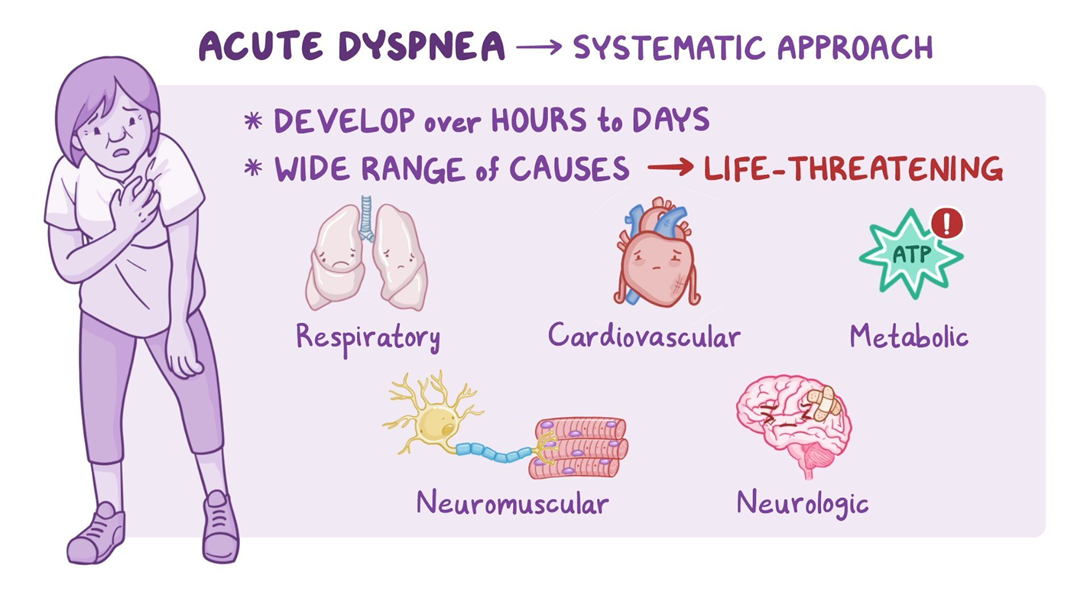A nurse is caring for an older adult client who has heart failure. Which of the following findings should the nurse report to the provider?
Chest x-ray showing cardiomegaly
PaCO2 55 mmHg
Potassium level 4.5 mEq/L
Urinary output of 1,000 mL in 12 hr
The Correct Answer is B
Choice A reason: Chest x-ray showing cardiomegaly is not a new finding for the client who has heart failure, as it indicates enlargement of the heart due to increased workload and pressure on the cardiac chambers.
Choice B reason: PaCO2 55 mmHg is an abnormal finding for the client who has heart failure, as it indicates respiratory acidosis, which is a condition where the lungs cannot eliminate enough carbon dioxide and the blood becomes too acidic. This can be caused by pulmonary edema, which is a complication of heart failure that impairs gas exchange and ventilation.
Choice C reason: Potassium level 4.5 mEq/L is a normal finding for the client who has heart failure, as it indicates adequate electrolyte balance and renal function.
Choice D reason: Urinary output of 1,000 mL in 12 hr is a normal finding for the client who has heart failure, as it indicates adequate fluid status and cardiac output.
Nursing Test Bank
Naxlex Comprehensive Predictor Exams
Related Questions
Correct Answer is B
Explanation
Choice A: This is incorrect. Potassium 4.0 mEq/L is a normal value and does not indicate heart failure.
Choice B: This is correct. Brain natriuretic peptide (BNP) is a hormone that is released by the heart when it is stretched or overloaded. A high level of BNP indicates that the heart is working harder than normal and may have heart failure. A normal BNP level is less than 100 pg/mL, so 275 pg/mL is elevated and suggestive of heart failure.
Choice C: This is incorrect. Sodium 140 mEq/L is a normal value and does not indicate heart failure.
Choice D: This is incorrect. Calcium 9.0 mg/dL is a normal value and does not indicate heart failure.

Correct Answer is C
Explanation
Choice A: This is incorrect. The Sims' position is not used for a colposcopy, which is a procedure that examines the cervix with a magnifying device. The client should be placed in the lithotomy position, which involves lying on the back with the legs spread and supported by stirrups.
Choice B: This is incorrect. The nurse should not insert a tampon following the procedure, as this can introduce bacteria and cause infection. The nurse should advise the client to use sanitary pads instead.
Choice C: This is correct. The nurse should instruct the client to avoid sexual intercourse until the cervix is healed, which can take up to a week. Sexual intercourse can cause bleeding, pain, and infection.
Choice D: This is incorrect. The nurse should not reinforce teaching that the procedure involves dilation of the cervix, as this is not true. A colposcopy does not require dilation of the cervix, unlike some other procedures such as endometrial biopsy or hysteroscopy.
Whether you are a student looking to ace your exams or a practicing nurse seeking to enhance your expertise , our nursing education contents will empower you with the confidence and competence to make a difference in the lives of patients and become a respected leader in the healthcare field.
Visit Naxlex, invest in your future and unlock endless possibilities with our unparalleled nursing education contents today
Report Wrong Answer on the Current Question
Do you disagree with the answer? If yes, what is your expected answer? Explain.
Kindly be descriptive with the issue you are facing.
